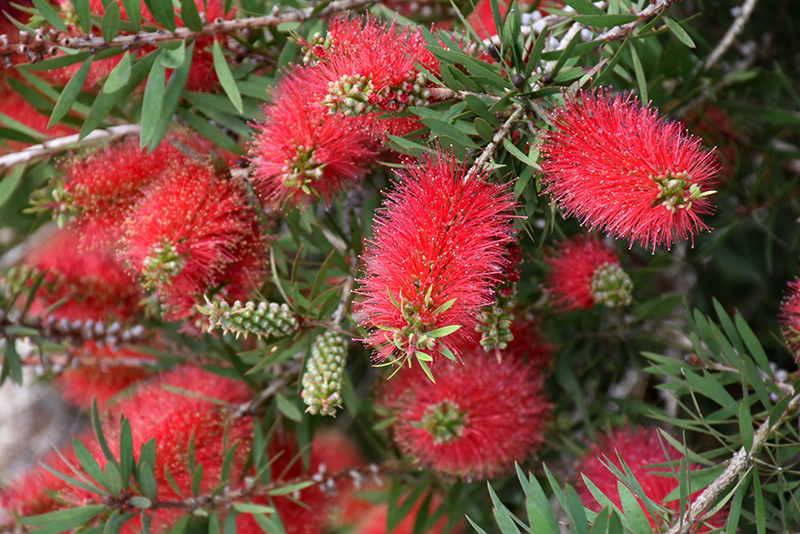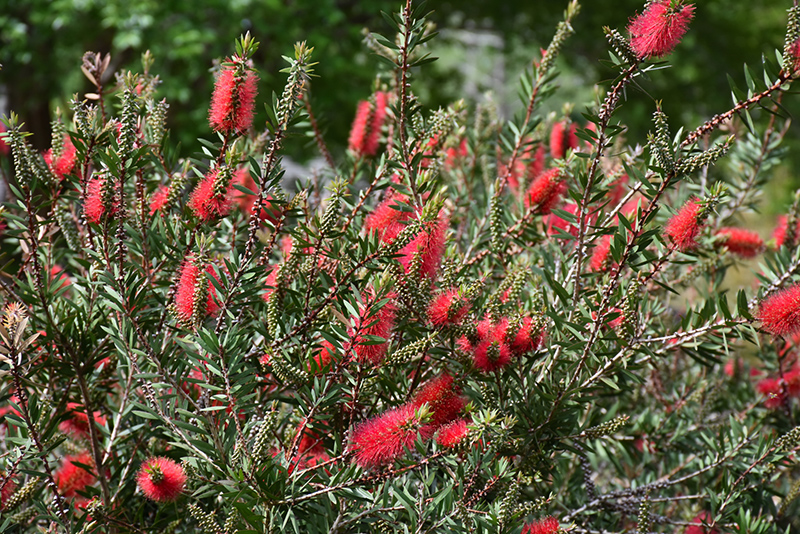Height: 15 feet
Spread: 8 feet
Sunlight:
![]()
![]()
Hardiness Zone: 8b
Other Names: Red Bottlebrush, Lemon Bottlebrush
Description:
An elegant and unusual flowering variety; intense crimson red bottlebrush blooms are large and eye catching and bloom throughout the summer; can be maintained as a small tree, or a hedge
Ornamental Features
Crimson Bottlebrush features showy spikes of crimson catkins with red overtones at the ends of the branches from mid spring to late fall. It has green evergreen foliage. The fragrant narrow leaves remain green throughout the winter.
Landscape Attributes
Crimson Bottlebrush is an open multi-stemmed evergreen shrub with an upright spreading habit of growth. It lends an extremely fine and delicate texture to the landscape composition which can make it a great accent feature on this basis alone.
This is a relatively low maintenance shrub, and is best pruned in late winter once the threat of extreme cold has passed. It is a good choice for attracting bees and hummingbirds to your yard. It has no significant negative characteristics.
Crimson Bottlebrush is recommended for the following landscape applications;
- Mass Planting
- General Garden Use
- Container Planting
Planting & Growing
Crimson Bottlebrush will grow to be about 15 feet tall at maturity, with a spread of 8 feet. It has a low canopy with a typical clearance of 1 foot from the ground, and is suitable for planting under power lines. It grows at a medium rate, and under ideal conditions can be expected to live for approximately 30 years.
This shrub does best in full sun to partial shade. It prefers to grow in average to moist conditions, and shouldn't be allowed to dry out. It may require supplemental watering during periods of drought or extended heat. It is not particular as to soil type or pH. It is somewhat tolerant of urban pollution. This species is not originally from North America.
Crimson Bottlebrush makes a fine choice for the outdoor landscape, but it is also well-suited for use in outdoor pots and containers. Its large size and upright habit of growth lend it for use as a solitary accent, or in a composition surrounded by smaller plants around the base and those that spill over the edges. It is even sizeable enough that it can be grown alone in a suitable container. Note that when grown in a container, it may not perform exactly as indicated on the tag - this is to be expected. Also note that when growing plants in outdoor containers and baskets, they may require more frequent waterings than they would in the yard or garden.



